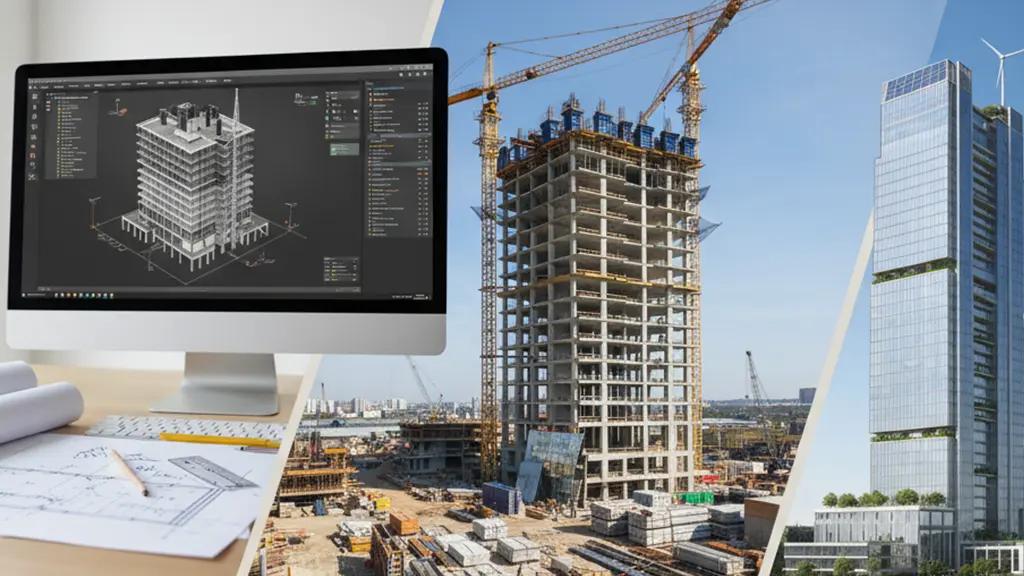Darwin proved survival depends on evolution. What if construction projects followed the same path through BIM dimensions?
Building information modeling (BIM) is never considered a mere tool; it is truly an evolutionary leap for the architecture, engineering, and construction (AEC) industry, just like Darwin’s theory of evolution, species developed and changed to survive. BIM dimensions in construction follow a similar path of evolution, with each stage adding increased knowledge, strength, and flexibility to the project lifecycle.
Additionally, BIM’s ten dimensions illustrate the development from early concepts to a fully developed, industrialized, intelligent construction system, much like the Dashavatara, which represent evolution through the ages.
These are the following dimensions of BIM that define its complete potential:
1D – Scratch Point (Concept Drawing)

These are the following dimensions of BIM that define its complete potential:
2D – Vector (Schematic Drawing)

3D – Shape (Detailed Design)
- Dashavatara’s Varaha, the avatar of the boar, describes the appearance of a structured, robust land life. Meanwhile, Darwin’s theory accounts for the stage in terms of more complex body structures to attain the advantages of survival. Similarly, BIM 3D evolves quickly to become a powerful, detailed multi-discipline model that promotes collaboration and delivers accessible visualization.

4D – Time

5D – Cost

6D – Sustainability

7D – Facility Management

8D – Safety

9D – Lean Construction

10D – Industrialized Construction

Conclusion
From one to ten dimensions of BIM, the process is not just the process, but it can be termed evolutionary. Similar to the Dasavatara, which illustrates the gradual change towards peace and stability. BIM dimensions demonstrate how construction evolves through sustainability, accuracy, and resilience, enabling a project to progress from BIM creation to completion.
Designheed’s view of these dimensions is neither in a trajectory nor a step in isolation, but equally as an integrated part of the process that facilitates a more intelligent, efficient, and sustainable project delivery. Our experts translate the BIM concept to completion, ensuring our engagement improves outcomes for clients. Please visit our website for additional details.

